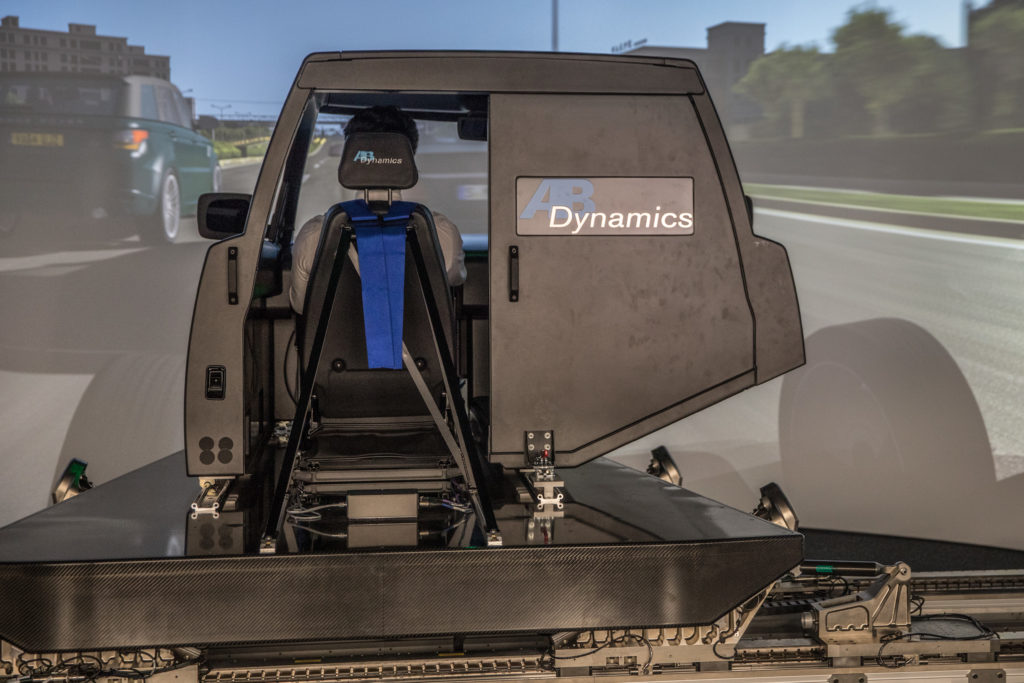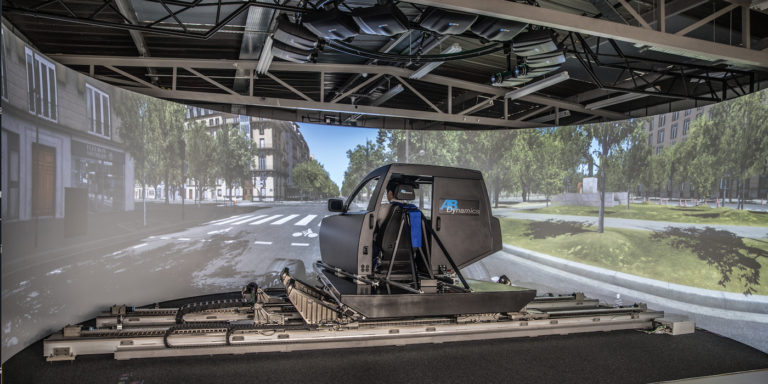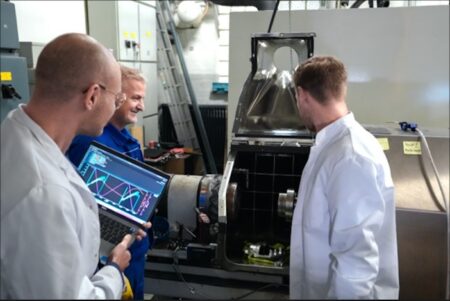The Chinese Automotive Technology and Research Centre (CATARC), a science research institute established in 1985 to meet China’s desire to grow its automotive industry, has expanded its vehicle development capabilities with the acquisition of an immersive driving simulator. The simulator is a third-generation Advanced Vehicle Driving Simulator (aVDS) from AB Dynamics, which will be used to provide driver-in-the-loop testing capabilities for development work involving vehicle dynamics, ride handling, ergonomics, driver behavior, powertrain refinement and more, with a focus on evaluating and validating ADAS and autonomous technology.
According to AB Dynamics, the purchase is indicative of the rate of technology advancement within the Chinese automotive industry, as CATARC is the first proving ground to acquire an aVDS since the product’s launch last year.
Other customers include the Kempten University of Applied Sciences’ ‘Adrive Living Lab’ in Germany.
The simulator is intended to help Chinese manufacturers design and test new vehicle concepts and advanced safety systems, including autonomy, with CATARC believing China will see an increasing need for driver-in-the-loop (DiL) simulation as ADAS demand rises. The simulator is expected to reduce the need for early physical prototypes and mules, and reduce development times.The aVDS will also enable DiL simulation for vehicle dynamics applications that were not previously possible. Steering systems, chassis and suspension can be modeled so that ride and handling characteristics are accurately replicated by the simulator and usefully evaluated.
“The use of simulators in vehicle development offers efficiency in both time and cost and it also allows us to validate autonomous technologies,” explained Gongqing Li, vice chief engineer of the Automotive Testing and Research Institute at CATARC. “Investing in a third-generation driving simulator is essential if we are going to undertake virtual vehicle development effectively. The versatility of the aVDS means that vehicle systems and configurations can be rapidly tested in different driving environments with a driver in the loop. This is a core requirement for future vehicle development.”
The aVDS can also aid the development of technologies such as AEB, ADAS and full autonomy, helping assess driver-technology interaction in a safe, virtual environment. It is also a tool for helping evaluate occupant comfort and anxiety in an autonomous vehicle, as it negotiates a range of simulated traffic scenarios and roadscapes.

Tailored for CATARC
CATARC’s engineers selected the aVDS due to its level of driving immersion. As Kuiyuan Guo, director of the intelligent driving division at CATARC explained, “This is one of the most important qualities in a driving simulator and is enabled by a high technical specification, such as low latency dynamics and feedback alongside precise visual, audio, haptic and vestibular cueing.”
To enhance user immersion, CATARC has elected to include a stereo 10 projector system that enables both 2D and 3D viewing. It will also feature a lightweight carbon fiber passenger cabin including features such as a programmable dashboard, interchangeable automatic and manual transmissions, a cabin audio system and rear-view mirrors with image displays.
Realistic steering feedback is provided by an active multi-function wheel, while an active brake pedal provides the driver with realistic dynamic road, ABS and braking ‘feel’ feedback. Motion cueing is enhanced with an active seat and seat belt, providing a greater level of immersion. A driver monitoring system from Smart Eye is able to gauge driver fatigue, distraction and workload by tracking pupil dilation, eye movement and eyelid position. The heart rate and galvanic skin response of the driver is also monitored.
The aVDS Control Software suite includes motion platform control and motion cueing software. The ultra-high resolution graphical environment and model visualization software for the projected images is provided by rFpro.
The aVDS will be used alongside existing AB Dynamics equipment at CATARC, such as the SPMM (suspension parameter measurement machine), which measures the parameters used in the vehicle models; vehicle driving robots (steering and pedal), and ADAS Soft Crash Targets. The equipment will allow users to take measurements of an existing vehicle or prototype and construct an accurate virtual model that can be used in simulation. They can then safely develop vehicle systems in a simulated environment before validating them on the test track using the robots and crash targets. The aVDS can also be used to evaluate early concept models before a prototype is built.





